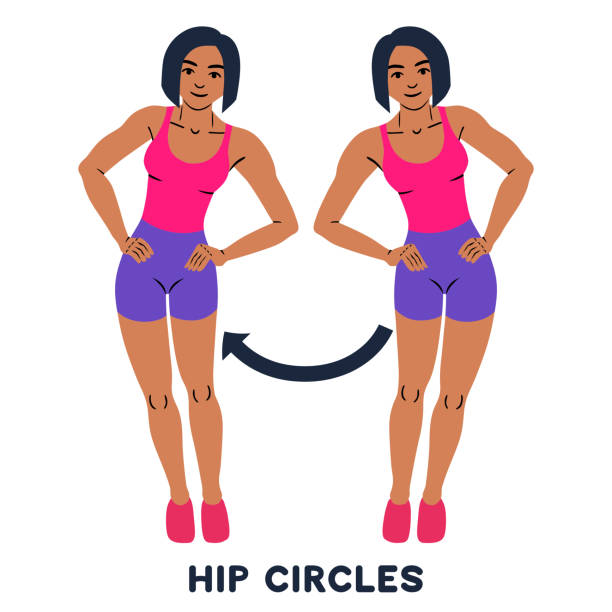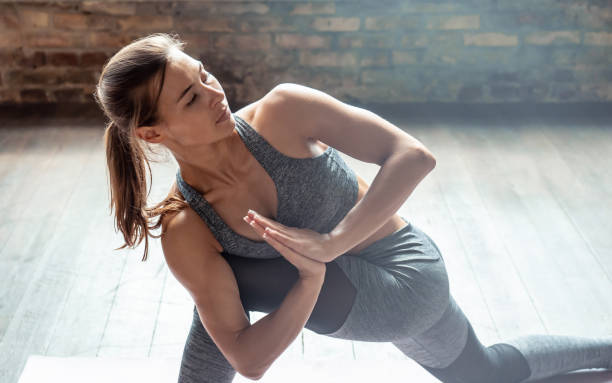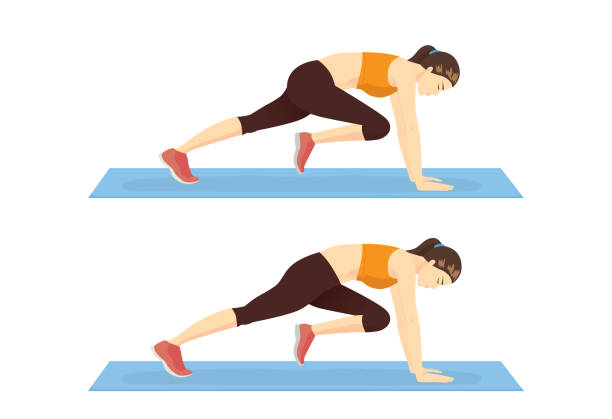Introduction:
Whether you are a professional athlete or someone trying to maintain your physical fitness, warming up before any workout is crucial. Warming up prepares your body for the physical activity ahead and reduces the risk of injury. While static stretching is commonly practiced, research has shown that dynamic stretches and warm-up exercises provide a better warm-up routine for increased performance, preventing potential injuries. Dynamic warm-ups involve:
- Performing movements that mimic those in your workout.
- Replicating sports-specific activities.
- Elevating core temperature and heart rate.
Expert-approved dynamic warm-up techniques have been one of the most effective ways for athletes to improve their flexibility and mobility while unleashing their full potential during their athletic endeavours. Let’s deep dive into expert-approved dynamic warm-up techniques to elevate our performance levels.

High knees:
High knees replicate crucial movements used in sprinting, making it an excellent addition to any running-based sportsperson’s proper warm-up make-up. To perform high knees correctly, stand with feet shoulder-width apart and raise one knee as high as possible towards chest level while lifting the opposite arm above the head simultaneously. You can continue this process by alternating between both legs.
While performing high knees as part of a dynamic warm-up exercise routine increases mobility and improves posture by strengthening leg muscles such as the hamstrings and quadriceps. It also helps increase the endurance levels necessary for long-distance runners.

Butt kicks
Butt kicks are precisely what they sound like; kicking butt behind each step contributes significantly to activating gluteal muscles while triggering hamstring activation, which supports powerful pushing motions throughout your training program. Stand upright with feet hip-width apart, bend your right leg at the knee angle so that heels touch your buttocks; similarly, then alternate between left & right legs.
Integrating butt kicks during a dynamic warm-up routine increases strength in supporting muscle groups such as calves and hamstring while immensely boosting power output to help runners reduce fatigue quicker than usual.

Leg swings
Leg swings are an excellent pre-workout exercise to improve the range of motion throughout the lower body while providing plenty of essential benefits like joint mobility and flexibility. You can do leg swings whilst standing upright; by holding on to a sturdy object, swing one foot forward & backwards or sideways. Similarly, carry out the same process with the other leg.
Leg swings have been known to reduce stress levels around your hip flexors that tend to prevent squats from deep positions. Athletes with tight calves, Groin areas also benefit significantly from these low-impact, dynamic stretching exercises.

Arm circles
Arm circles are an excellent addition to a workout warm-up tips back-up routine because they perform multi-muscle activation of arm muscles and shoulder muscles while activating chest muscles simultaneously. Stand erect and lift your arms straight up above your head in line with your shoulders and slowly start performing circular movements alternatively.
By including arm circles as part of warm-up exercises, you get improved blood flow and circulation in the upper body regions called into action by resistance workouts such as pressing motions during bench presses or other forms involving dumbbell presses.

Jumping jacks:
Last but not least, among expert-approved dynamic warm-up techniques is jumping jacks. Jumping jacks involve jumping while moving legs apart and simultaneously lifting hands overhead – clapping hands together before returning. This fantastic exercise provides full-body activation necessary for any type of athletic performance-related workload, like burpees for CrossFit athletes or imperial walkers needed for professional basketball players.
The best time to integrate Jumping Jacks into your workout routine differs depending on individual techniques; thus, under careful monitoring, it proves beneficial when performed correctly during warmup prior as it raises core body temperature and heart rate levels before participating in high-intensity workouts.

Hip circles
Hip circles are an excellent way to warm up hip mobility and encourage a proper range of motion. Athletes require adequate hip function for movements such as lunges, squats, runs etc., wherein incorrect movement patterns can over-stress tissues around the hip joint leading to injury risk over time. Staying mindful during this drill is crucial as it highlights the importance of rotational control via core muscles allowing you to execute powerful moves with more stability later on.
To perform this exercise effectively:
– Stand tall on both feet hip-width apart.
– Begin rotating hips in circular motions clockwise for 10 – 15 revolutions.
– Reverse directions anti-clockwise to complete set one.
– Repeat set until adequately warmed up.

Lunge with a twist
Lunges are great for warming up lower body muscles such as quads/glutes, but adding an upper body twist helps mobilize the thoracic spine, which controls rotation while hitting oblique abdominal muscles for better trunk stabilization during dynamic moves, mainly throwing in sports like baseball/softball/basketball/etc.
To perform this exercise correctly:
– From the standing pose, step forward with your right leg making sure the left knee still doesn’t cross your toes and the left foot stays planted behind you.
– Inhale while reaching both arms overhead, pointing towards the ceiling.
– Exhale twisting torso only (not hips) towards bend front knee side so right arm points towards the ground instead of pushing up.
– Inhale back to the centre & exhale, lowering both hands toward the floor, keeping the front leg bent at a 90° angle, along w lifting a posterior leg to lean forward slightly from behind to step back into a standing pose.
– Repeat with left leg leading lunges this time.

Inchworms
The Inchworm connects the shoulder blades & tight hamstrings along w lower back, which makes it perfect for athletes who require more flexibility via sport positioning standards or injury prevention measures against strains commonly pulled by sports that depend heavily on running, jumping, swimming like track & field/cross country/swimming etc.
To execute this at its best practice:
– Start by standing tall, then bend forward and over at the waist, keeping your knees slightly bent – walking fingertips towards the floor as far as you can go without strain.
– Then crawl fingers forward several inches until your body is fully extended horizontally, hinging only at the hips to avoid arching back throughout the entirety of the movement.
– Hold when you’ve reached full extension before walking hands backwards again;
Repeat a few times.

Scorpions
Scorpions provide significant benefits in improving spinal mobility and aiding recovery from back injuries under posture by elongating tension-build-up areas in the lumbar region (below shoulder blades), bringing balance to mind-body coordination necessary for complex exercise routines like weight-lifting/squatting/bench pressing/kettlebell lifting etc.
To do scorpions correctly:
– Start laying on the stomach with legs straight, and arms extended outwards.
– Lift one leg off the ground towards the opposite side of the body, rotating at the waist until the knee reaches the floor by the other arm’s elbow.
– Hold the stretch for a few seconds before reversing motion & repeating on the opposite side.

Groiners:
Groiners may look simple, but they are actually highly effective in improving hip mobility and flexibility which is critical in preventing injury during leg day workout routines.
Technique and form for groiners:
• Start in a pushup position with hands shoulder-width apart
• Bring right foot outside of right hand and drop left leg down to the mat to stretch hip flexors
• Return to the original pushup position, then repeat on the opposite side using the left foot.
Improving hip mobility and flexibility with this warm-up exercise:
Groiners target the hip flexors, which can often become tight as a result of sitting for prolonged periods or constant exercises like squats which could lead to future injury during workouts.

Shoulder Taps:
Shoulder taps are excellent in engaging your upper body and core during warm-ups. This activation includes scapular stabilization muscles in the upper back region necessary for promoting healthy shoulder movement.
Proper form for shoulder taps:
• Begin in a plank position with hands directly under the shoulders
• Lift one hand to tap the opposite shoulder while stabilizing through the other hand.
• Alternate tapping your shoulders while maintaining a straight neutral spine.
Repeat for desired reps on each side
Engaging your upper body and core during warm-ups:
Adding shoulder taps can help combine both activation and quick bursts of activity to promote greater shoulder endurance, ideal for use in longer workouts such as circuits or endurance-based training.

Lateral lunges
Lateral lunges help enhance hip mobility and promote balance and stability during lateral movements such as running or jumping.
To perform lateral lunges:
• Stand up straight with feet wider than hip-distance apart.
• Lower into a lunge position on one side while keeping the opposite leg extended and straight.
• Return to centre, then repeat on the other side for 6-8 reps each.

Mountain climbers
Mountain climbers target every major muscle group in the body and increase heart rate to prepare you for high-intensity exercises such as sprints or agility drills.
How to perform mountain climbers correctly:
• Start in a plank position with wrists directly under shoulders.
• Bring one knee towards your chest without changing the position of your hands or feet.
• Alternating legs, increase pace while keeping hips low and core engaged for 20-30 seconds.

Bear crawls
Bear crawls activate the whole body with a particular emphasis on the shoulders, chest, and abs. This exercise is perfect for athletes who rely on upper body strength, such as wrestlers or rock climbers.
Follow these steps to perform bear crawls:
• Begin in an all-fours position with hands directly under your shoulders.
• Walk forward by moving opposite arm and leg simultaneously while keeping hips steady.
• Continue for 10 yards, then reverse for another 10 yards.
Bonus: Tips for creating a personalized dynamic warm-up routine
Incorporating varied warm-ups keeps training fresh but also revives stagnant areas of progress. Customized routines are ideal for preventing plateauing effects or making workouts too tricky, resulting in injuries rather than progressive gains.
Selecting the best exercises will indeed vary depending on the specific athletic activity being pursued. For instance, mobility-focused movements should feature prominently for dancers or gymnasts, whereas power-lifters may need to arm-wrestle with much heavier weights. Sport-specific exercises offer additional benefits in identifying areas of weakness, allowing athletes an opportunity to turn weaknesses into strengths.
In choosing which dynamic warm-up routine is ideal for optimal results, recall that it’s beneficial to spend at least ten minutes performing light cardio activity beforehand. Remember that increasing intensity does assist fat burn and metabolic rate increases but can be incredibly strenuous on muscle groups if performed incorrectly.
Conclusion – elevate your performance.
Warming up properly before a training session or competition is essential to avoid injuries and maximize performance. Incorporating expert-approved dynamic warm-up techniques like lateral lunges, mountain climbers, bear crawls, inchworms, jumping jacks, high knees, butt kicks, groaners leg swings, among others, will help prepare your body adequately when performing more intense movements ahead.
Plus, incorporating a personalized approach and focusing on sport-specific techniques compounds, giving you the required edge both physically and mentally, resulting in improved athletic performance and overall health wellness.


Leave a Reply